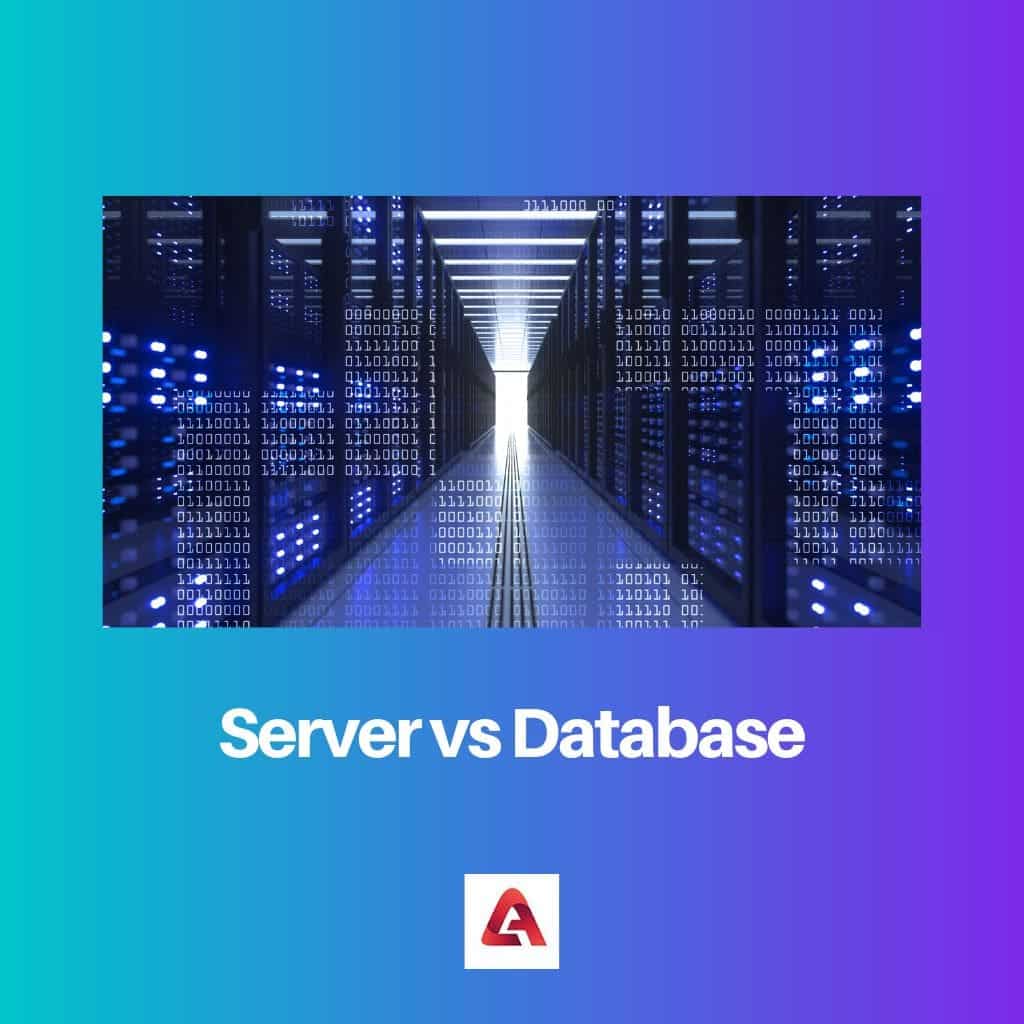Server and Database are both computing terms that are confused. Virtualization has become a famous option for large organisations, where servers and databases can work as virtual instances.
Both Servers and Databases have redundancy abilities, backup, and recovery. They can also manage the simultaneous data processing by several users and have security properties.
Key Takeaways
- A server is a computer or system that provides resources, data, or services to other computers or devices, known as clients, over a network.
- A database is a structured collection of data or information which can be stored on a server or another storage system. It is used to manage, organize, and retrieve data efficiently.
- Servers and databases are important components of modern computing systems, with servers providing access to resources and services. Stores store and organize the information needed for various applications and processes.
Server vs Database
Servers provide services such as hosting websites, running applications, and managing data storage. Databases are collections of structured data organized in a way that allows for efficient storage, retrieval, and manipulation of data. They can be classified into different types, depending on the organization of data.

Comparison Table
| Parameter of Comparison | Server | Database |
|---|---|---|
| Definition | It is a computer program that offers serviceability to other devices and programs known as clients. | It is a data collection that is organized, stored, and accessed electronically from a computer system. |
| Services | A web server offers web-based services only. | A database controls and manages business-based, enterprise-based, and web-based services simultaneously. |
| Language | A server uses a regular language such as PHP, HTTP, JSP, or ASP. | A database does not have a common language but its query or program language. |
| Usage | A server supplies services to numerous hosts or clients at the same time. | A database manages and stores the data of a computer program or the computer. |
| Examples | Mail servers, application servers, and web servers are a few examples of Servers. | Operational databases, relational databases, cloud databases, and non-relational databases are a few examples of databases. |
What is Server?
The server is a computing term that refers to a section of computer software or hardware that provides services to other devices or programs called ‘clients’.
Servers supply numerous serviceabilities, such as executing computations and sharing resources or data among various clients.
A server can be formed to control several functions on the network, depending on the network size of the organization, the storage capacity, the accessibility requirements, the number of users, etc.
A server is defined by its allocation and arrangement as a devoted resource, such as:
- A Mail server manages and controls the exchange of emails for a business. It is accountable for receiving and sending emails quickly.
- A Print server controls user printing and synchronizes all connected printers.
- An FTP server helps in the easy transfer of files, and it also stores the files.
- A Web server governs the interaction and accessibility of the content of the web.
- A File server is committed to storing all network data files and user files.
- A Database server manages several databases.
- A Single server also can manage numerous functions simultaneously, provided the hardware conditions to meet the network demands.
- Servers are drafted for a particular server function in data centres and huge enterprise companies.

What is Database?
‘Flat Files’ is what the database was initially known as. It is used to display simple rows and columns for storing data.
But today, it permits complex queries across various database sets and tables.
Relational databases provide more ease to users to manage data using database programs. Examples can include MySQL and Microsoft SQL.
Three elements form a Database Management System. These elements include the physical database, the database engine, and the database schema.
The first one is the repository, the next is the software that allows data access, and the last is the stated data structure.
All file types can be stored in databases, ranging from text and numeric to multimedia. A data structure is present in databases to arrange the stored data.
Let us take an example. An employee database in a company will include applicable columns for different data and details of the employees, such as their names, surnames, age, sex, address, and so on.
A profile picture can also be added for each employee.
There are various types of databases depending on the need of the organizations, users, or the network. A few examples include the following:
- Operational database that permits users to modify, add, or delete the data.
- Relational Database Management System.
- Big Data controls vast and complex data set that standard databases cannot manage.
- In a Cloud Database, the database access is provided via service with the cloud host, in remote data centres.
- Object-oriented databases are databases that store data in lumps, and it eases the manipulation of data.

Main Differences Between Server and Database
- A Server manages a website’s fixed content and data of a website, while database stores and manages the computer’s data.
- Only web-based services are provided in the case of Servers, whereas a database can manage the web-based services, business, and enterprise-based services at the same time.
- The server has a few types: application servers, web servers, and mail servers. Databases can also be classified into more categories, such as cloud, relational, non-relational, and operational databases.
- PHP, HTTP, JSP, ASP, and such regular languages are used in the case of a server. On the other hand, a regular or common language is not used in a database; it has its unique program or query language.
- Examples of Servers include Google web server, Microsoft Internet Information Services, Sun Java System, and Apache HTTP Server. Examples of databases include MySQL, Oracle, DB2, and SAP.



